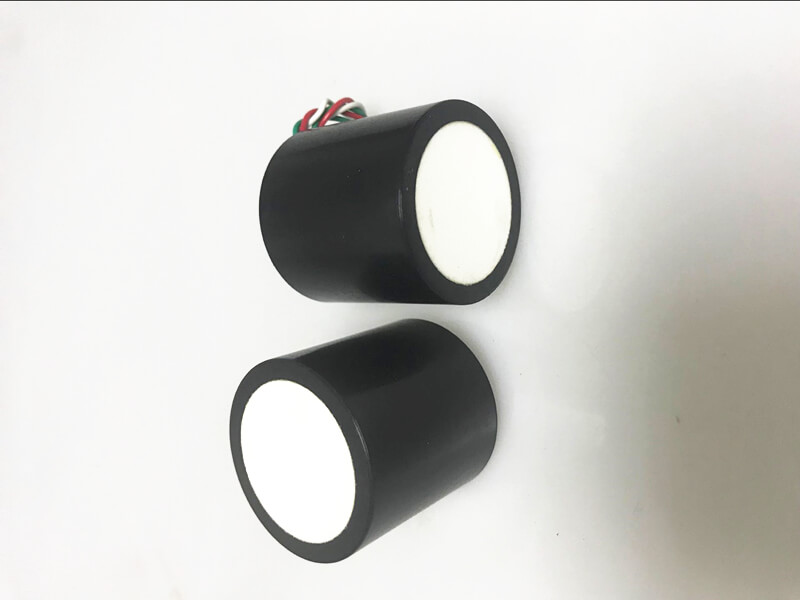Hubei Hannas Tech Co.,Ltd-Professional Piezoceramic Elements Supplier
Hot Keywords:
- All
- Product Name
- Product Keyword
- Product Model
- Product Summary
- Product Description
- Multi Field Search
Views: 2 Author: Site Editor Publish Time: 2018-09-20 Origin: Site








If a piezoelectric ceramic piece with a resonant frequency of 40 kHz in the transmitting sensor is applied (a 40 KHz high-frequency voltage is applied to the double crystal oscillator, the piezoelectric ceramic piece is elongated and shortened according to the polarity of the applied high-frequency voltage, so that ultrasonic waves of 40 KHz frequency are transmitted. The ultrasonic wave propagates in a dense form (the degree of density can be modulated by the control circuit) and is transmitted to the wave receiver. The receiver is based on the principle of the piezoelectric effect used by the pressure sensor, that is, applying pressure on the piezoelectric element to make the pressure .When the electrical component is strained, it produces a 40KHz sinusoidal voltage with a "+" pole on one side and a "-" pole on the other. Because the amplitude of the high-frequency voltage is small, it must be amplified. The ultrasonic sensor allows the driver to safely reverse. The principle of ultrasonic distance sensor datasheet is to detect any obstacles near the reverse path and issue warnings in the time. The designed detection system can provide both audible and visual audible and visual warnings, and the warning indicates that obstacles are detected in the blind zone of distance and direction. In this way, in a narrow place, whether it is parking or driving, with the help of the reverse obstacle alarm detection system, The pressure will be reduced and the necessary actions can be taken with ease.
2.System Components
It consists of a transmitting sensor (or wave transmitter), a receiving sensor (or wave receiver), a control part and a power supply part. The transmitter sensor consists of a transmitter and a ceramic vibrator transducer with a diameter of about 15 mm. The transducer functions to convert the electrical vibration energy of the piezo ceramic vibrator into super energy and radiate into the air; and the receiving ultrasonic proximity sensors is a piezo ceramic vibrator transducer. Comprising with the amplifying circuit, the receives the wave to generate mechanical vibration, which converts it into electric energy, and uses it as the output of the sensor receiver to detect the transmitted super. In the actual use, the piezo ceramic vibrator of the transmitting sensor can also be used. Used as a ceramic vibrator for receiver sensors. The control part mainly controls the pulse chain frequency, duty cycle, sparse modulation and counting, and detection distance sent by the transmitter. The ultrasonic sensor power supply (or signal source) can be used with DC12V ± 10 % or 24V ± 10 %.

3.Operating mode
The ultrasonic transducer for distance measurement uses a sonic medium to perform non-contact, wear-free detection of the object to be detected. Ultrasonic sensors can detect transparent or colored objects, metal or non-metallic objects, solid, liquid, and powdery materials. Its detection performance is virtually unaffected by any environmental conditions, including soot and rain. Ultrasonic sensors mainly use a direct reflection type detection mode. The detected object is located in front of the sensor which is partially emitted back to the sensor by the emitted sound wave.
4.Detection range and acoustic emission angle
The detection range of an ultrasonic distance sensor depends on the wavelength and frequency at which it is used. The longer the wavelength has the smaller frequency, and the larger is the detection distance. For example, a compact sensor with a millimeter-scale wavelength has a detection range of 300 to 500 mm. A sensor with a wavelength is greater than 5 mm can detect a range of up to 8 m. Some sensors have a narrower 6mm; acoustic emission angle and are therefore more suitable for accurately detecting relatively small objects. Other sensors with acoustic emission angles of 12mm to 15 mm,which are capable of detecting objects with large dips. In addition, we have an external probe type ultrasonic sensor, the corresponding electronic circuit is located in the conventional sensor housing. This structure is more suitable for detecting situations where installation space is limited. Sensor adjustments are almost all ultrasonic sensors can adjust the far points of the switch output or the measurement range. Objects outside the set range can be detected, but will not trigger a change in the output state. Some sensors have different adjustment parameters, such as the response time of the sensor, the return loss performance, and the adjustment of the working direction when the sensor is connected to the pump device. Repeatability, wavelength and other factors will affect the accuracy of the ultrasonic sensor. The most important factor is the acoustic wave velocity with temperature, so many ultrasonic sensors have temperature compensation characteristics. This feature enables analog output type ultrasonic sensors to achieve repeatability of up to 0.6 mm over a wide temperature range.
Products | About Us | News | Markets and Applications | FAQ | Contact Us